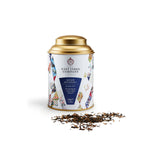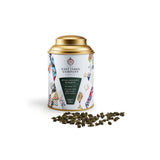Stories
Flowering Teas: Beauty & Taste Combined
So how did this art start?
Exactly when is a little disputed, but likely they have their origins a handful of centuries ago, becoming very popular only in the last 20 years or so. It certainly started in Yunnan, in south-east China, when the art of shaping teas for entirely visual purposes was developed to help decorate the royal courts.
From village to village in China, each with their own unique variations, the artists take great pride in their work, rightly believing their creations to symbolise love, happiness and prosperity.
These are precious – even the most experience flowering tea artists can only make handfuls a day. Always use glass when brewing your flowering tea for the full ‘wow’ effect. Take a picture, we would love to see it.



 Ceylon / Sri Lanka
Ceylon / Sri Lanka Assam, India
Assam, India Japan
Japan Taiwan
Taiwan Nepal
Nepal China
China Kenya
Kenya Egypt
Egypt South Africa
South Africa















